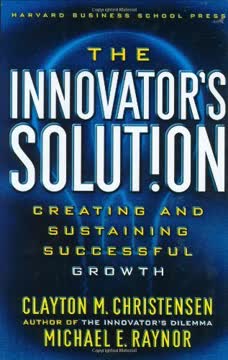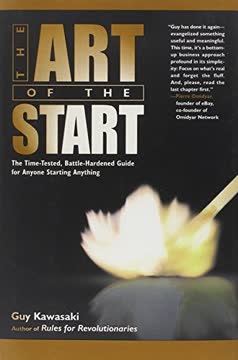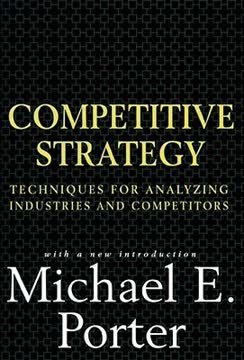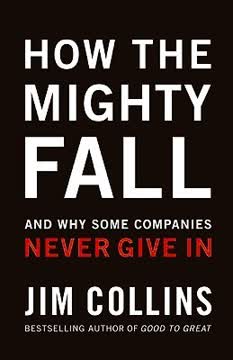Key Takeaways
1. Focus and Measure: Define Clear Goals and Track Progress
"We will save 100,000 lives from medical mistakes by June 14, 2006. By 9 a.m."
Clear, compelling goals drive change. Successful influencers start by articulating specific, measurable objectives that inspire action. They avoid vague aspirations and instead focus on concrete outcomes with deadlines.
Frequent measurement is crucial. Develop clear metrics that directly relate to your goals and track them regularly. This provides feedback, maintains focus, and allows for course corrections. Be cautious of choosing the wrong metrics, as they can inadvertently drive undesired behaviors.
Examples of effective goal-setting:
- Dr. Don Berwick's 100,000 Lives Campaign in healthcare
- Grameen Bank's specific targets for reducing poverty
- Corporate initiatives with clear, time-bound objectives
2. Find Vital Behaviors: Identify High-Leverage Actions
"Not all moments are created equal. Influencers focus on helping people change a small number of high-leverage behaviors during crucial moments."
Identify crucial moments where specific actions have a disproportionate impact on results. These are the vital behaviors that, if changed, will lead to the greatest improvements.
Methods for finding vital behaviors:
- Notice the obvious but underused actions
- Look for crucial moments of choice
- Learn from positive deviants who achieve better results
- Spot behaviors that challenge stubborn cultural norms
Examples:
- 100% condom use by sex workers to prevent HIV spread
- Specific communication practices in high-performing software teams
- Key safety behaviors in industrial settings
3. Engage Personal Motivation: Connect to Intrinsic Satisfaction
"People can actually love engaging in behaviors that otherwise might seem obnoxious. But only if they're allowed the psychological freedom to choose them."
Allow for choice. People resist coercion but embrace change when they feel they have agency. Use motivational interviewing techniques to help individuals discover their own reasons for change.
Create direct experiences that connect people emotionally to the consequences of their choices. Field trips, simulations, and hands-on activities are more powerful than lectures.
Tell meaningful stories that create vicarious experiences and moral engagement. Use narrative to make abstract concepts concrete and emotionally resonant.
Make it a game. Transform tedious tasks by incorporating elements like clear goals, immediate feedback, and a sense of progress or competition.
4. Develop Personal Ability: Master Skills Through Deliberate Practice
"Much of will is skill."
Deliberate practice is key to developing new abilities. Break complex skills into smaller components and practice them with full attention and immediate feedback.
Elements of effective skill-building:
- Demand full attention for brief intervals
- Provide immediate feedback against clear standards
- Break mastery into mini-goals
- Prepare for setbacks and build resilience
Build emotional skills to manage impulses and delay gratification. Teach cognitive reappraisal techniques to help people shift from "hot" emotional responses to "cool" rational thinking.
Examples:
- Surgical training simulations
- Role-playing difficult conversations
- Practicing financial self-control
5. Harness Social Motivation: Leverage Peer Influence
"The immediate good news is that a single respected individual can create conditions that compel ordinary citizens to act in curious, if not unhealthy, ways."
Lead by example. Leaders must visibly demonstrate the behaviors they want to see, often making personal sacrifices to show commitment.
Engage formal and opinion leaders. Identify and partner with respected individuals who can influence others. Focus on the 13.5% of early adopters who are socially connected.
Create new norms by making the undiscussable discussable and fostering accountability among peers.
Strategies:
- Use symbolic actions to demonstrate values
- Enlist opinion leaders in teaching and modeling behaviors
- Create forums for open discussion of challenging topics
- Encourage peer-to-peer accountability
6. Provide Social Ability: Enable Through Relationships and Teamwork
"With a little help from our friends, we can produce a force greater than the sum of our individual efforts."
Build social capital by creating structures that foster collaboration and mutual support. Design work processes and physical spaces that encourage interaction and teamwork.
Provide assistance during crucial moments. Ensure people have access to help, coaching, and resources when they need it most.
Strategies:
- Create interdependent roles and team structures
- Foster mentoring and peer coaching relationships
- Design physical spaces that promote collaboration
- Provide real-time feedback and support
Examples:
- Grameen Bank's borrower groups
- Delancey Street's peer mentoring system
- Corporate "buddy systems" for new initiatives
7. Align Structural Motivation: Use Rewards and Accountability Wisely
"Use extrinsic rewards third."
Prioritize intrinsic and social motivation before turning to external rewards. When using incentives, ensure they are:
- Tied directly to vital behaviors
- Immediate and meaningful
- Focused on progress, not just outcomes
Use accountability judiciously. Create clear expectations and consequences, but avoid relying solely on punishment. Use "shots across the bow" to warn before imposing penalties.
Considerations:
- Be wary of unintended consequences from incentives
- Reward effort and improvement, not just results
- Use small, symbolic rewards to reinforce social values
- Create systems of mutual accountability among peers
8. Enhance Structural Ability: Modify the Environment to Support Change
"Fish discover water last."
Make the invisible visible by highlighting important information and cues in the environment. Use visual management techniques to make progress and goals apparent.
Make desired behaviors easier and undesired behaviors more difficult. Modify physical spaces, tools, and processes to support vital behaviors.
Strategies:
- Use data displays and dashboards to highlight key metrics
- Redesign spaces to promote collaboration or focus
- Simplify complex processes with checklists or automation
- Remove barriers to desired behaviors (e.g., providing supplies)
Examples:
- Hospital hand hygiene stations
- Workplace layouts that promote interaction
- Consumer product designs that encourage proper use
9. Overdetermine Success: Combine Multiple Sources of Influence
"When they do this, change becomes not only more likely but almost inevitable."
Engage all six sources of influence to create overwhelming force for change:
- Personal Motivation
- Personal Ability
- Social Motivation
- Social Ability
- Structural Motivation
- Structural Ability
Analyze existing influences to identify which sources are working against desired change. Then systematically address each source to support vital behaviors.
Example combinations:
- Training (Personal Ability) + Peer Support (Social Ability) + Incentives (Structural Motivation)
- Storytelling (Personal Motivation) + Opinion Leaders (Social Motivation) + Environmental Cues (Structural Ability)
10. Make the Invisible Visible: Highlight Key Information and Cues
"Data are extremely important in the campaign against Guinea worm disease."
Manage the data stream by providing clear, frequent, and relevant information that supports vital behaviors. Make invisible factors (like microbes or long-term consequences) tangible and immediate.
Use propinquity (physical proximity) to influence behavior. Design spaces and processes that bring people together or separate them strategically.
Strategies:
- Create visual management systems
- Use simulations or demonstrations to make abstract concepts concrete
- Design physical spaces to promote desired interactions
- Provide real-time feedback on key metrics
Examples:
- Public health campaigns that visualize disease spread
- Corporate dashboards showing team performance
- Redesigned hospital layouts to improve communication
11. Make It Easy: Simplify Desired Behaviors and Complicate Undesired Ones
"Smart creatures, including Homo sapiens, use tools. Why? Because smart creatures do their best to find a way to make hard tasks easier."
Reduce barriers to vital behaviors by simplifying processes, providing tools, and removing obstacles. Conversely, make undesired behaviors more difficult or inconvenient.
Build habits through structure by incorporating vital behaviors into existing routines or creating new rituals that make good choices automatic.
Strategies:
- Redesign processes to eliminate unnecessary steps
- Provide tools or technology that simplify complex tasks
- Create default options that align with desired behaviors
- Build reminders or prompts into existing systems
Examples:
- One-click ordering in e-commerce
- Pre-packed healthy meal kits
- Automatic enrollment in retirement savings plans
- Software that prevents common errors
Last updated:
FAQ
What's Influencer: The New Science of Leading Change about?
- Behavior Change Focus: The book delves into how to effectively influence and change human behavior across various settings, from personal relationships to organizational environments.
- Influencer Definition: An influencer is described as a leader who can create rapid, profound, and sustainable behavior change.
- Structured Approach: It emphasizes a structured approach combining personal, social, and structural influences to achieve change.
Why should I read Influencer: The New Science of Leading Change?
- Practical Strategies: Offers actionable strategies for improving influence in both personal and professional contexts.
- Research-Based Insights: Grounded in extensive research, providing evidence-based methods tested in real-world scenarios.
- Broad Applicability: Principles can be applied to a wide range of challenges, from workplace culture improvement to personal development.
What are the key takeaways of Influencer: The New Science of Leading Change?
- Influence is Learnable: Influence is a skill that can be developed through practice and understanding, not an innate trait.
- Six Sources of Influence: Introduces six sources of influence to motivate and enable behavior change: personal motivation, personal ability, social motivation, social ability, structural motivation, and structural ability.
- Vital Behaviors: Emphasizes identifying and focusing on a few vital behaviors to achieve significant changes in outcomes.
What are the three keys to influence mentioned in Influencer: The New Science of Leading Change?
- Focus and Measure: Influencers are clear about their goals and consistently measure progress to ensure accountability and direction.
- Find Vital Behaviors: They identify a small number of high-leverage behaviors that can lead to significant results, rather than trying to change everything at once.
- Engage All Six Sources: Successful influencers utilize all six sources of influence to create a supportive environment for change, ensuring that motivation and ability are addressed.
What are the six sources of influence outlined in Influencer: The New Science of Leading Change?
- Personal Motivation: Connects behaviors to intrinsic values and emotions to enhance motivation.
- Personal Ability: Focuses on developing skills and competencies necessary to enact desired behaviors.
- Social Motivation: Leverages social networks to encourage and support behavior change.
- Social Ability: Involves enabling individuals through collaboration and support from peers and leaders.
- Structural Motivation: Looks at how rewards and incentives can be structured to promote desired behaviors.
- Structural Ability: Focuses on creating an environment that facilitates desired behaviors, making them easier to perform.
How does Influencer: The New Science of Leading Change define "vital behaviors"?
- High-Leverage Actions: Vital behaviors are a few key actions that can lead to significant changes in outcomes.
- Focus on Crucial Moments: These behaviors often occur during crucial moments that can lead to success or failure in achieving desired results.
- Examples Provided: Examples include encouraging open communication in a team or practicing hand hygiene in healthcare settings.
What is the "broken windows theory" discussed in Influencer: The New Science of Leading Change?
- Environmental Influence: The theory posits that visible signs of disorder and neglect can lead to increased crime and antisocial behavior.
- Community Application: Applied in urban settings to reduce crime by addressing minor issues like graffiti and litter.
- Case Study in New York: Implemented strategies in New York City led to significant crime reductions by addressing minor offenses and improving the environment.
How can I apply the principles from Influencer: The New Science of Leading Change in my personal life?
- Identify Vital Behaviors: Start by identifying specific behaviors you want to change, focusing on key actions with the most impact.
- Engage Social Support: Surround yourself with supportive individuals who can encourage and hold you accountable.
- Create a Supportive Environment: Make changes to your physical environment to facilitate desired behaviors, like keeping healthy snacks visible.
What role do opinion leaders play in the influence process according to Influencer: The New Science of Leading Change?
- Social Connections: Opinion leaders are respected individuals whose endorsement can significantly influence others.
- Early Adopters: Often early adopters, their acceptance can pave the way for broader adoption among the general population.
- Engagement Strategies: Engaging opinion leaders enhances the effectiveness of influence strategies due to their credibility.
How can social motivation be leveraged to encourage behavior change according to Influencer: The New Science of Leading Change?
- Peer Encouragement: Utilizing support and encouragement from peers can significantly enhance motivation.
- Engaging Opinion Leaders: Involving respected individuals within a group can amplify social motivation.
- Supportive Environment: Building a culture that celebrates and rewards positive behaviors fosters an environment conducive to change.
What are some examples of successful influence strategies from Influencer: The New Science of Leading Change?
- Guinea Worm Disease Eradication: Community engagement and education led to a dramatic decrease in cases.
- 100% Condom Campaign in Thailand: Reduced HIV transmission rates by promoting condom use through community involvement.
- Delancey Street Model: Demonstrates how a supportive community and structured environment can help transform lives.
What are the best quotes from Influencer: The New Science of Leading Change and what do they mean?
- “The message is no more important than the messenger.”: Highlights the significance of credibility and social influence in the change process.
- “You don’t get to decide whether or not you engage the help of opinion leaders.”: Emphasizes the inevitability of social influence.
- “If you can’t talk about it, you can’t change it.”: Underscores the importance of open dialogue in addressing issues and fostering change.
Review Summary
Influencer receives mostly positive reviews for its practical approach to behavior change. Readers appreciate the well-researched strategies and real-world examples, finding them applicable to various settings. Some criticize the repetitive nature and lengthy stories, while others praise the book's clarity and insights. Many readers find the six-source influence model valuable for personal and professional development. The book is seen as a useful guide for leaders and change agents, though some feel it could be more concise and engaging.
Similar Books








Download PDF
Download EPUB
.epub digital book format is ideal for reading ebooks on phones, tablets, and e-readers.





